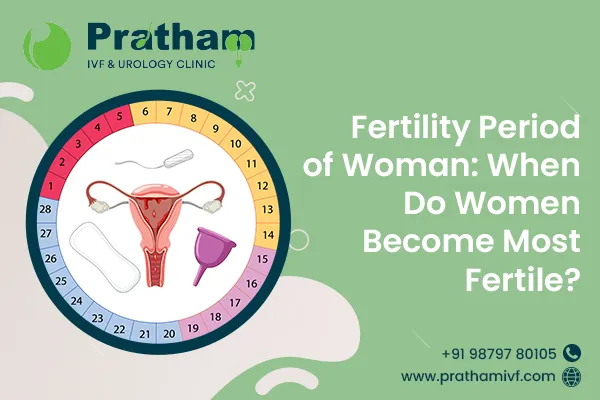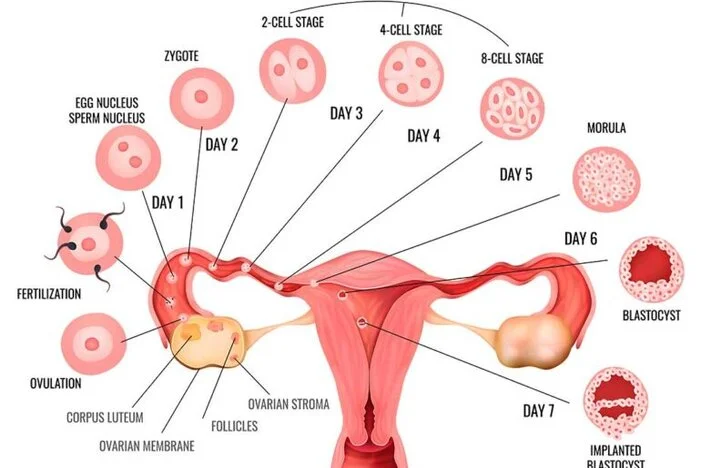
The fertility period of a woman refers to the time during her menstrual cycle when she is most likely to conceive. Understanding this window of fertility is essential for couples trying to get pregnant and also for those looking to avoid pregnancy naturally. With growing awareness about reproductive health, more women are turning to fertility education to plan their families effectively. Understanding when you're most fertile allows you to take control of your reproductive health. Whether you're planning a pregnancy now or in the future, understanding your fertility period can make a big difference.
The Menstrual Cycle and Its Role in Fertility
Every month, the menstrual cycle helps a woman's body prepare for pregnancy. It normally lasts 28 to 32 days, but this could change. The cycle is divided into phases: menstrual, follicular, ovulation, and luteal. Ovulation, which occurs around the middle of the cycle, is when an egg is released from the ovary and is the most fertile time. Understanding this cycle helps in identifying the fertility period of a woman, which is crucial for couples trying to conceive. By tracking ovulation and other symptoms, women can plan or prevent pregnancy more effectively, improving their chances naturally or through medical support if needed.
Phases of the Menstrual Cycle:
- Menstrual Phase (Days 1–5): Uterine lining shedding.
- Follicular Phase (Days 1–13): Follicles and eggs are developing.
- Ovulation Phase (Day 14, approximately): Release of a mature egg from the ovary.
- Luteal Phase (Days 15–28): Hormones prime the uterus for a prospective pregnancy.
The fertile window typically occurs around days 10 to 17, depending on the length of the cycle. Ovulation is the most fertile time, and sperm can survive in the female body for up to 5 days, which expands the fertile period.
Common Misconceptions About the Menstrual Cycle and Fertility
- Myth: You can only get pregnant on the day of ovulation.
Fact: You can become pregnant through sexual relations up to 5 days before ovulation. - Myth: A regular cycle means perfect fertility.
Fact: Other factors like egg quality, uterine health, and hormone levels matter too. - Myth: All women ovulate on Day 14.
Fact: Ovulation can vary depending on individual cycle lengths and health.
Understanding Ovulation
Ovulation is the discharge of a developed egg from the ovary, which occurs in the middle of the menstrual cycle. If sperm is available, this is the most fertile phase and has the highest possibility of conception.
Signs and Symptoms of Ovulation:
- Increase in clear, stretchy cervical mucus (like egg whites)
- Mild pelvic or abdominal pain (called mittelschmerz)
- Rise in basal body temperature after ovulation
- Increased libido
- Slight breast tenderness
- Light spotting (in some cases)
How to Track Ovulation:
- Ovulation Predictor Kits (OPKs): Detect the LH surge before ovulation.
- Basal Body Temperature Charting (BBT): Track temperature shifts to confirm ovulation.
- Cervical Mucus Monitoring: Observe changes in discharge consistency.
- Calendar Method: Estimate fertile days based on previous cycle lengths.
- Apps and Digital Trackers: Use period tracking apps for reminders and predictions.
Factors Affecting Fertility
Several factors can affect a woman’s ability to conceive. Some are under your control, whereas others are not.
Age:
- Fertility increases in the early 20s and drops sharply after 35.
- Egg quality and quantity reduce with age, affecting the chances of conception.
Health Conditions:
Conditions like PCOS, thyroid disorders, fibroids, and endometriosis can interfere with ovulation or implantation.
Lifestyle Choices:
- Smoking, excessive alcohol, poor diet, and lack of exercise negatively impact fertility.
- Chronic stress and poor sleep can disrupt hormonal balance.
Tips to Optimize Fertility:
- Eat a balanced, nutritious diet rich in folate, iron, and antioxidants.
- Maintain a healthy weight.
- Exercise regularly but moderately.
- Stay hydrated and manage stress with yoga, meditation, or counseling.
Fertility Awareness Methods (FAMs)
FAMs include observing fertility symptoms to obtain or avoid pregnancy.
Common Methods:
- Basal Body Temperature (BBT): Track morning temperatures to detect ovulation patterns.
- Cervical Mucus Monitoring: Watch for the clear, stretchy discharge that signals fertility.
- Calendar Method: Use cycle history to estimate ovulation days.
- Symptothermal Method: Combines several symptoms, including BBT, mucus, and cervix position.
Benefits of FAMs:
- Drug-free and natural
- Empowering for self-awareness
- Cost-effective
Limitations:
- Requires daily attention and consistency
- Not ideal for irregular cycles
- It may not be dependable on its own for pregnancy prevention.
Getting Pregnant During the Fertility Period
Timing is everything when it comes to conception. Understanding when you're most fertile boosts your chances of getting pregnant naturally.
Tips for Maximizing Conception:
- Have regular intercourse every 2–3 days during your cycle.
- Focus on the fertile window (5 days before and the day of ovulation).
- Avoid smoking, alcohol, and excess caffeine.
- Use a fertility app or calendar to monitor ovulation signs.
- Get a preconception check-up to rule out underlying issues.
When to See a Doctor:
- If you are under 35 and haven't conceived after 1 year of trying.
- If you are over 35 and have not conceived after 6 months.
- If you have known conditions like PCOS, endometriosis, or irregular periods.

Why Choose Pratham IVF for Female Infertility Center in Ahmedabad
When natural approaches do not produce the desired outcomes, consulting a reputable fertility specialist can make all the difference. Pratham IVF Center is one of Ahmedabad's leading infertility clinics, recognized for providing superior care, emotional support, and high success rates to couples attempting to conceive.
Understanding the Fertility Period of a Woman is essential in planning for pregnancy. At Pratham IVF Center, we help couples accurately track ovulation, identify the most fertile window, and provide personalized guidance tailored to each woman's body and cycle. Whether you're dealing with irregular periods, hormonal imbalances, or other complications, our specialists are here to help.
What Sets Us Apart:
- Highly qualified Female Infertility Treatment Doctors In Ahmedabad with expertise in IVF, IUI, and ICSI procedures.
- Modern labs and advanced diagnostic tools for precise treatment.
- Personalized fertility plans based on medical history and cycle analysis.
- Ethical, transparent practices ensuring comfort and trust.
- Supportive environment from your first consultation to post-conception care.
Even if you've faced repeated setbacks, Pratham IVF Center offers new hope with its compassionate and science-backed approach. Our goal is to guide you every step of the way, making your dream of parenthood a reality.
Conclusion
The fertility period of a woman is a powerful window of opportunity for conception. Understanding your menstrual cycle, tracking ovulation, and making healthy lifestyle choices can improve your chances of getting pregnant. Fertility awareness methods help you recognize your body's natural signals, making it easier to plan your family naturally. However, if you're facing challenges despite trying, seeking professional help is the next best step. Advanced fertility treatments like IVF and IUI offer renewed hope.
Take charge of your reproductive health today. Track your cycles, stay informed, and if needed, reach out to Pratham IVF Center—your trusted partner in the journey to parenthood. Book an appointment today at +91 98797 80105 or email us at prathamivf@gmail.com.
 Ahmedabad Top Rated IVF Center
Ahmedabad Top Rated IVF Center




